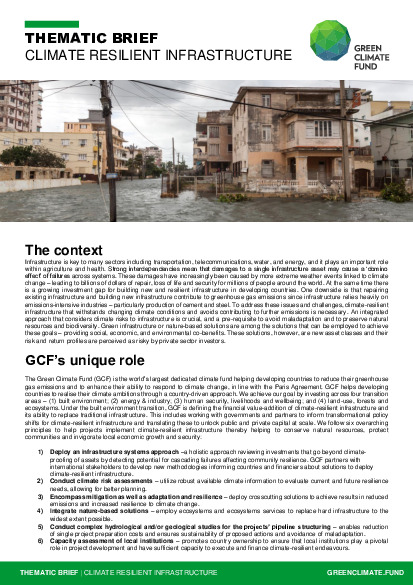Thematic brief: Climate resilient infrastructure
Infrastructure is key to many sectors including transportation, telecommunications, water, and energy, and it plays an important role within agriculture and health. Strong interdependencies mean that damages to a single infrastructure asset may cause a ‘domino effect’ of failures across systems. These damages have increasingly been caused by more extreme weather events linked to climate change – leading to billions of dollars of repair, loss of life and security for millions of people around the world. At the same time there is a growing investment gap for building new and resilient infrastructure in developing countries. One downside is that repairing existing infrastructure and building new infrastructure contribute to greenhouse gas emissions since infrastructure relies heavily on emissions-intensive industries – particularly production of cement and steel. To address these issues and challenges, climate-resilient infrastructure that withstands changing climate conditions and avoids contributing to further emissions is necessary. An integrated approach that considers climate risks to infrastructure is crucial, and a pre-requisite to avoid maladaptation and to preserve natural resources and biodiversity. Green infrastructure or nature-based solutions are among the solutions that can be employed to achieve these goals – providing social, economic, and environmental co-benefits. These solutions, however, are new asset classes and their risk and return profiles are perceived as risky by private sector investors.
